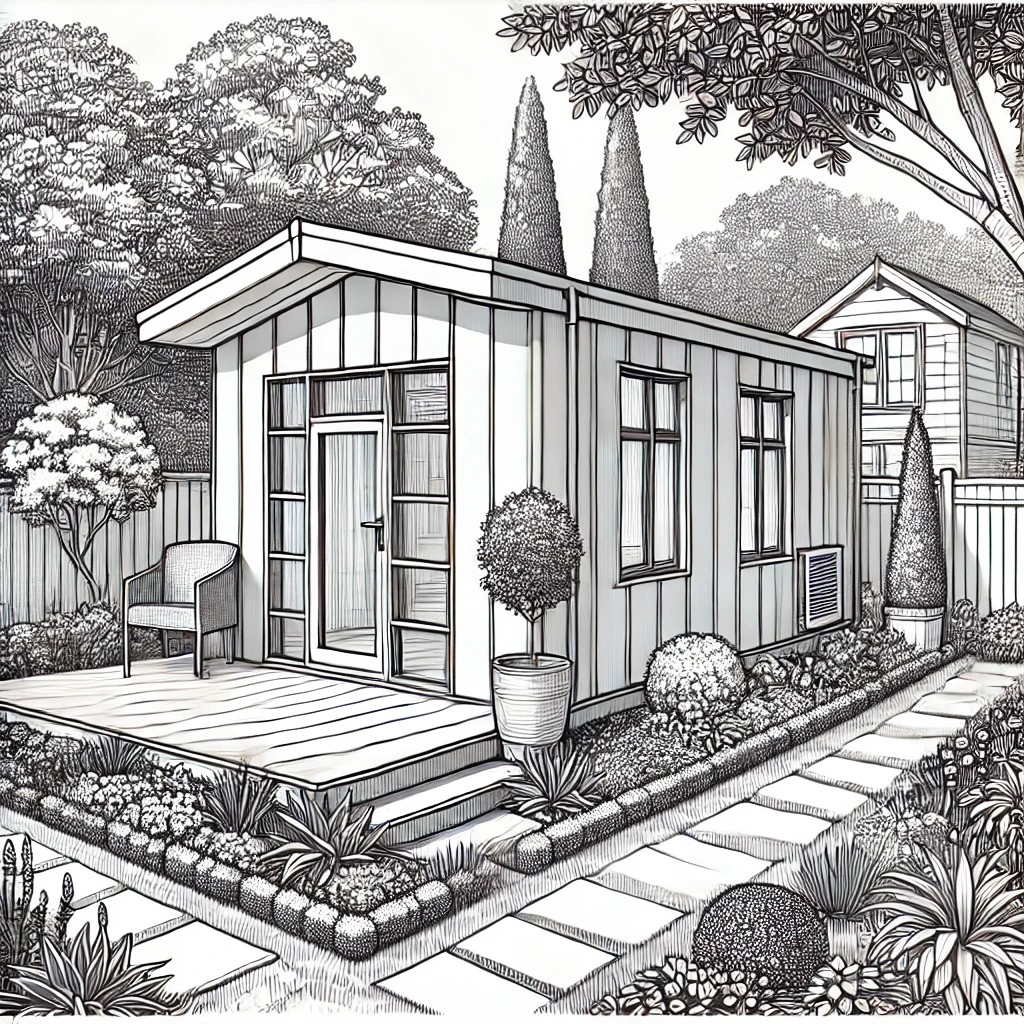Are you considering a prefab granny flat for your property?
Understanding the benefits, challenges, and essential details will help you make an informed decision.
Here’s everything you need to know.
What Are Prefab Granny Flats?
Prefab granny flats, also known as prefabricated or modular ADUs (Accessory Dwelling Units – learn more here), are small homes constructed off-site in a factory and then delivered to your property for assembly.
Prefab granny flats are a popular option because there is much less headache involved with the construction process, and the overall time of construction is much less than a traditional build.
Advantages of Prefab Granny Flats
Prefab granny flats offer several significant advantages:
Cost Effectiveness
Cost-effectiveness is one of the major benefits for choosing a prefab granny flat.
Sure, high-quality prefabs can cost quite a lot, but once you’ve purchased the building itself a lot less can go wrong with construction when compared to a traditional build.
Construction Time
Additionally, prefab granny flats can be constructed and delivered quickly.
The off-site building process means that weather delays and other common construction issues are minimized, allowing the units to be ready for installation in just a few weeks.
Quality
Prefabricated ‘anything’ has long been viewed as lower quality, especially in the construction industry.
This is a misconception, though, and prefab granny flats are a prime example of how high quality a prefabricated building can be.
It all comes down to working with a reputable builder and being clear on exactly what you want and expect.
Things To Keep In Mind
Like any construction project, there are several things to keep in mind with prefab granny flats – here are the main ones:
Local Regulations
First, you need to be aware of local regulations.
Zoning laws and building codes vary by location, and some areas have restrictions on the size (see here), placement, or even the existence of ADUs. It’s essential to check with your local planning department to understand the specific requirements and obtain the necessary permits before proceeding.
Finance Options
Financing options for prefab granny flats may differ from traditional home loans.
Some lenders offer specific financing products for prefab homes, so it’s worth exploring these options to find one that suits your financial situation.
Additionally, consider the long-term value that a prefab granny flat can add to your property, especially if you plan to use it as a rental unit.
Types of Prefab Granny Flats
Prefab granny flats come in several types, each with its own set of characteristics.
Modular units are built in sections and then assembled on-site. This type offers a good balance between customization and quick assembly. Because the modules are constructed in a factory, the quality is consistent, and the on-site work is limited to assembling the pieces.
Panelized units, on the other hand, arrive as flat panels that are put together on-site. This method allows for some design flexibility, as the panels can be arranged in various configurations. However, the assembly process may take a bit longer compared to modular units.
Fully prefabricated units are delivered as complete structures, requiring minimal on-site work. These units are the fastest to install but offer the least amount of customization. They are ideal for homeowners who prioritize speed and simplicity over personalized design.
The Ugly of Prefab Granny Flats
While prefab granny flats have many advantages, they also come with some drawbacks.
Limited Customization (In Some Cases)
A lot of prefab granny flats come in standard designs, and therefore don’t offer as much customization as some people would like.
This is mainly because they are built to pre-designed plans which are already approved. There are options for customization, but it can be difficult to get these types of changes approved.
Site Preparation Costs
Another challenge with prefab granny flats is the cost associated with preparing the site.
In some cases, this cost is quite negligible if the area is relatively flat and stable, but challenging plots can mean higher costs to prepare the site,
Resale Value
Additionally, the resale value of a property with a prefab granny flat may not increase as much as with a traditionally built ADU.
Some buyers might perceive prefab units as lower quality, even though modern prefab construction is often just as durable and efficient as conventional methods.
Transportation
Finally, transporting the prefab unit to your property can present logistical challenges.
Depending on your location and the size of the unit, delivery might require special permits, escorts, or road closures, which can add to the complexity and cost of the project.
Luckily, pretty much all of these cons can be ignored if you work with a reputable prefab builder, as they will prepare everything for you and ensure the end product is customized and easy to resell.
FAQs
Are prefab granny flats durable?
Yes, modern prefab granny flats are built with durable materials and are often more energy-efficient than traditional homes, thanks to advances in construction technology.
Can I customize a prefab granny flat?
While customization options are available, they may be more limited compared to traditional builds. Most manufacturers offer a range of layouts, finishes, and features to choose from.
Q: How long does it take to install a prefab granny flat?
The installation process typically takes a few weeks, depending on site preparation and local regulations. The off-site construction process significantly reduces the overall timeline.
A Quick Recap
Prefab granny flats (ADUs) offer a super practical way of adding additional living space to your property in a relatively short amount of time, with less complications expected during the ‘construction’ phase.
They do still have limitations though, and high-quality prefabs can be on the expensive side, but it’s still an avenue worth exploring for anyone who wants to build a granny flat.
